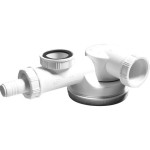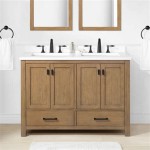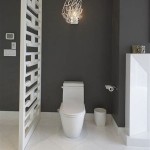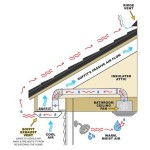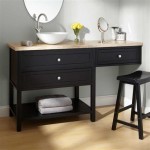Painting Plastic Bathroom Cabinets: A Comprehensive Guide
Bathroom cabinets, often constructed from plastic or laminate-covered particleboard, can become dated or worn over time. Replacing them can be a significant expense and disruption to the bathroom's functionality. A cost-effective alternative is painting the existing cabinets, offering a fresh aesthetic and extending their lifespan. However, painting plastic cabinets requires specific techniques and materials to ensure proper adhesion and a durable, long-lasting finish. This article provides a comprehensive guide to successfully painting plastic bathroom cabinets.
Key Point 1: Preparation is Paramount
The success of any painting project, particularly when dealing with plastic, hinges on meticulous preparation. This involves thorough cleaning, proper sanding, and priming. Skimping on these steps will inevitably lead to paint failure, such as peeling, chipping, or poor adhesion.
Cleaning: Begin by removing all hardware, including handles, knobs, hinges, and drawer pulls. Clean the cabinets thoroughly with a degreasing cleaner to remove any accumulated soap scum, dirt, oils, or mildew. Trisodium phosphate (TSP) is an effective cleaner, but it is crucial to wear gloves and eye protection when handling it. Alternatively, a commercially available bathroom cleaner specifically designed to cut through grease and grime can be used. After cleaning, rinse the cabinets thoroughly with clean water and allow them to dry completely. This step is essential for creating a clean surface for the primer to adhere to.
Sanding: Sanding plastic is vital for creating a textured surface that the primer can grip onto. Use a fine-grit sandpaper, typically between 220 and 320 grit. Avoid using coarse sandpaper, as it can scratch the plastic and leave visible imperfections. Lightly sand all surfaces of the cabinets, focusing on areas where the finish is glossy or smooth. The goal is not to remove the existing finish entirely but to create a slight roughness. After sanding, wipe down the cabinets with a tack cloth to remove any sanding dust. Dust is a common contaminant that can prevent proper paint adhesion and result in a bumpy finish.
Priming: Priming is arguably the most crucial step in painting plastic. A high-quality adhesion primer is essential for ensuring that the paint bonds properly to the plastic surface. Choose a primer specifically formulated for use on plastic or composite materials. Epoxy primers are a good choice due to their excellent adhesion properties and durability. Apply the primer in thin, even coats using a brush, roller, or spray gun. Allow the primer to dry completely according to the manufacturer's instructions, typically 24-48 hours. Once the primer is dry, lightly sand any imperfections or drips with fine-grit sandpaper and wipe clean with a tack cloth. Some primers may require multiple coats, depending on the color and the type of plastic.
Key Point 2: Selecting the Right Paint and Application Methods
Choosing the correct paint and employing the appropriate application method are critical for achieving a professional and durable finish on plastic bathroom cabinets. The type of paint and the way it is applied significantly impact the final appearance and longevity of the painted surface.
Paint Selection: Acrylic latex paint is a popular choice for painting bathroom cabinets due to its durability, water resistance, and ease of cleanup. It is also available in a wide range of colors and finishes. For bathrooms, choose a paint with a mildew-resistant additive to prevent mold growth in the humid environment. Semi-gloss or gloss finishes are generally recommended for bathroom cabinets because they are easier to clean and resist moisture better than matte or eggshell finishes. Alternatively, consider using specific cabinet enamel paints, which are formulated for high-use surfaces and offer excellent durability. Oil-based paints can also be used, but they require more skill to apply, have a longer drying time, and require mineral spirits for cleanup. They are also less environmentally friendly than latex paints.
Application Methods: Paint can be applied using a brush, roller, or spray gun. Each method has its advantages and disadvantages. Brushing is suitable for smaller areas or intricate details, but it can leave brush strokes if not done carefully. Use a high-quality synthetic brush to minimize brush marks. Rolling is a good option for larger, flat surfaces. Use a foam roller to achieve a smooth finish. A spray gun provides the most even and professional-looking finish, but it requires practice and proper ventilation. Whether using a brush, roller, or spray gun, apply the paint in thin, even coats to avoid drips and runs. Multiple thin coats are always preferable to one thick coat. Allow each coat to dry completely according to the manufacturer's instructions before applying the next coat. Lightly sand between coats with fine-grit sandpaper if necessary to remove any imperfections or dust particles.
Specific Techniques for Plastic: When painting plastic, avoid applying too much pressure, as this can cause the paint to crack or peel. Work in a well-ventilated area to minimize exposure to paint fumes. If using a spray gun, maintain a consistent distance between the nozzle and the surface to ensure even coverage. Practice on a scrap piece of plastic before painting the cabinets to get a feel for the paint and application method.
Key Point 3: Post-Painting Procedures and Long-Term Maintenance
The work does not end once the paint is dry. Proper post-painting procedures are essential for ensuring the paint cures properly and achieves maximum durability. Additionally, implementing a regular maintenance routine will help to prolong the life and appearance of the painted cabinets.
Curing Time: Allow the paint to cure completely before reinstalling the hardware and using the cabinets. Curing time varies depending on the type of paint and environmental conditions, but it typically takes several days or even weeks for the paint to fully harden and reach its maximum durability. Avoid placing heavy objects on the painted surfaces during the curing process. Handle the cabinets with care to prevent scratches or damage to the fresh paint. Follow the paint manufacturer's recommendations for curing time and handling instructions.
Hardware Reinstallation: Once the paint is fully cured, reinstall the hardware, including handles, knobs, hinges, and drawer pulls. Consider replacing old or worn hardware with new hardware to further enhance the appearance of the cabinets. Ensure that the screws are tightened securely but not over-tightened, as this can damage the plastic. If necessary, drill pilot holes for the screws to prevent cracking the plastic. When installing hinges, make sure they are aligned properly to ensure that the doors open and close smoothly.
Maintenance: To maintain the painted finish, clean the cabinets regularly with a mild soap and water solution. Avoid using abrasive cleaners or scouring pads, as these can scratch the paint. Wipe up spills immediately to prevent staining. Periodically inspect the cabinets for any signs of damage, such as chips, scratches, or peeling paint. Touch up any damaged areas with paint as needed to prevent further deterioration. Apply a coat of furniture polish or wax to protect the painted finish and make it easier to clean. Avoid exposing the cabinets to excessive moisture or humidity, as this can cause the paint to blister or peel. Regularly ventilate the bathroom to reduce humidity levels. Consider using a dehumidifier in particularly humid environments. Proper maintenance will help to keep the painted cabinets looking their best for years to come.
Addressing issues like peeling or chipping, should those arise despite careful application, require prompt attention. Small chips can be touched up with a small brush and matching paint. Larger areas of peeling may require sanding down the affected area, re-priming, and re-painting. Taking care of these issues early will prevent the problem from spreading and causing further damage.

How To Paint Laminate Cabinets Love Renovations

Vanity Make Over Removal Of Plastic Melamine Cabinet Fronts Paint And Antique

How To Paint Laminate Cabinets A Erfly House

How To Paint A Bathroom Vanity Angela Marie Made

How To Paint Laminate Cabinets Love Renovations

How To Paint Laminate Cabinets A Erfly House

How To Paint Bathroom Cabinets Without Sanding 8 Vital Steps Grace In My Space

How To Paint Bathroom Cabinets Vanity No Special Diy Power Couple

How To Paint Cabinets Last Painting A Bathroom Vanity Maison De Pax

How To Paint Bathroom Cabinets Without Sanding 8 Vital Steps Grace In My Space
Related Posts


